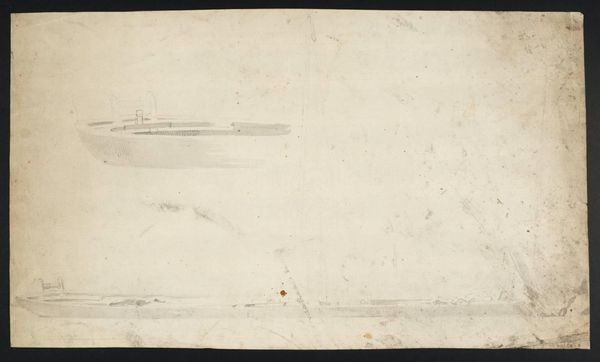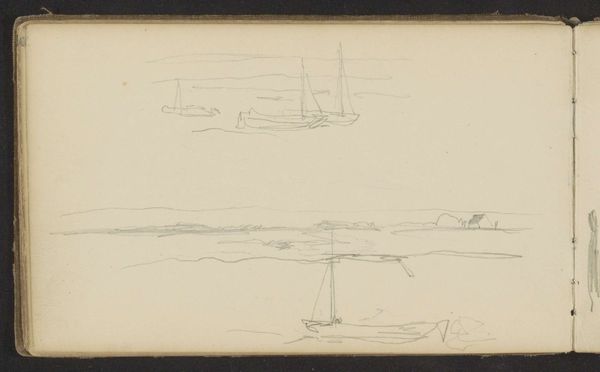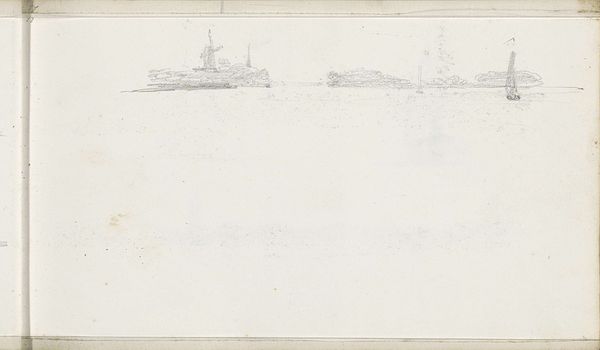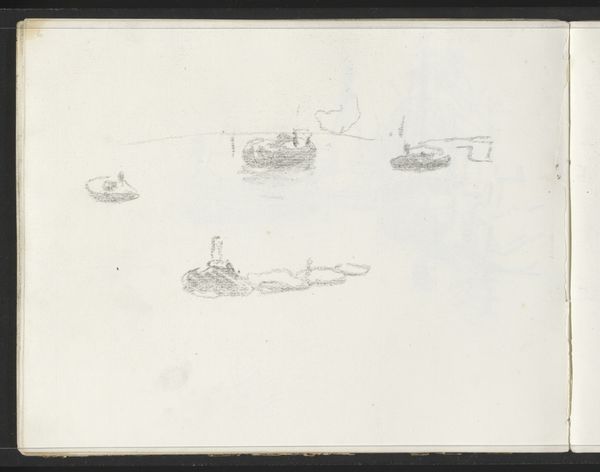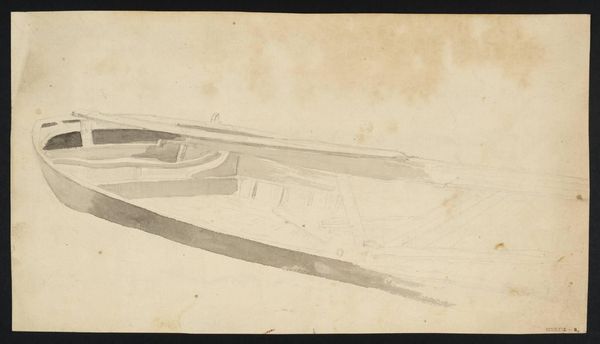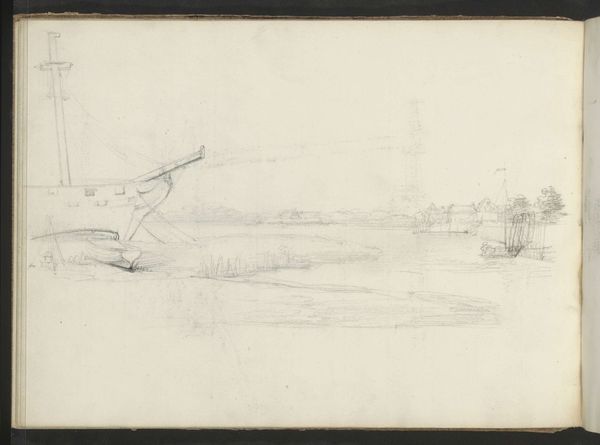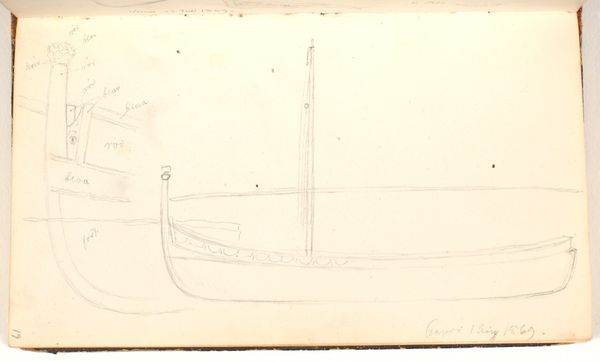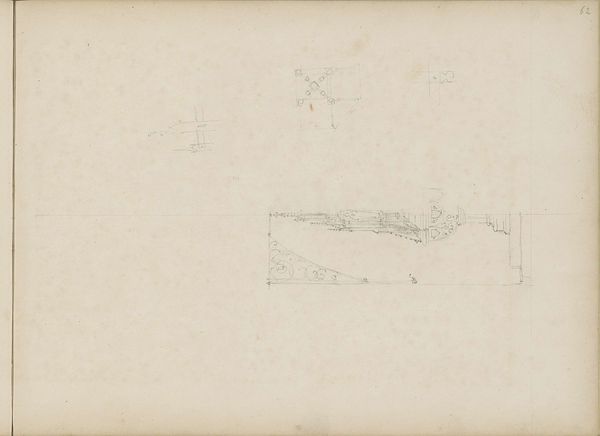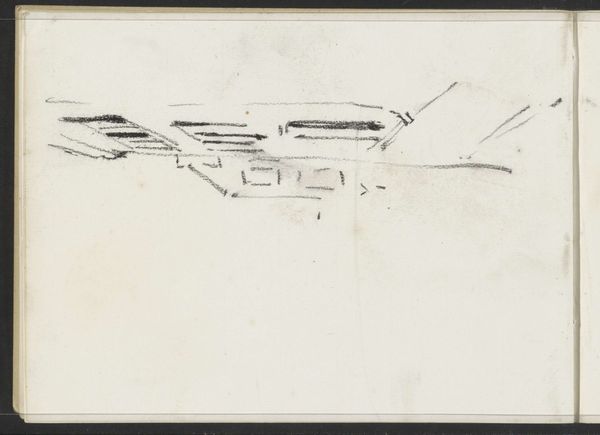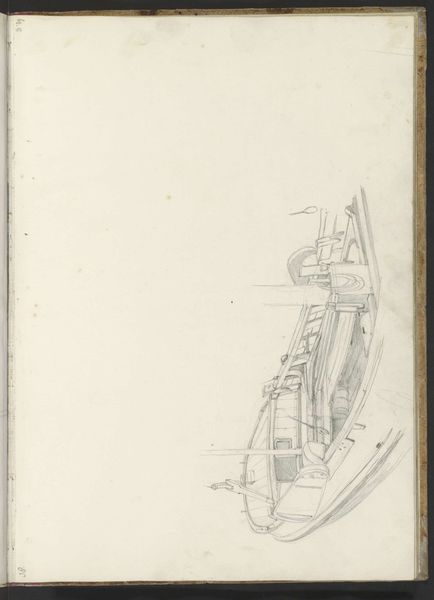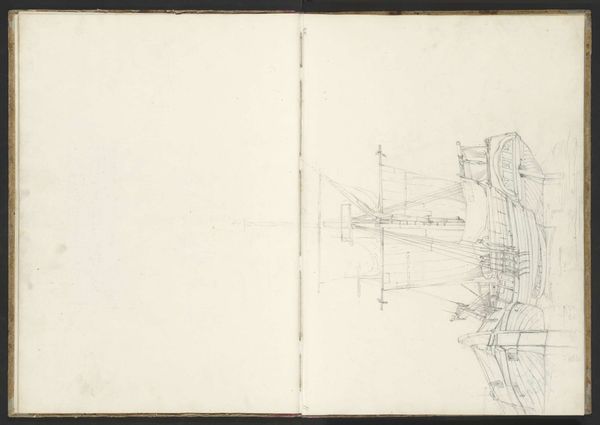
drawing, paper, pencil
#
drawing
#
landscape
#
paper
#
pencil
#
realism
Dimensions: height 311 mm, width 487 mm
Copyright: Rijks Museum: Open Domain
Editor: So, this is "Molen langs een vaart," a pencil drawing on paper by Willem Roelofs, dating sometime between 1832 and 1897. It’s held at the Rijksmuseum. It’s incredibly subtle, almost ghostly. What historical significance do you see in a drawing like this? Curator: Considering its historical context, this drawing offers insight into the Romantic era's fascination with nature and the changing landscape of the Netherlands. We often view the Dutch Golden Age landscapes of the 17th century as the pinnacle, filled with national pride. Roelofs, though, made this drawing in a period of shifting national identity. Editor: Shifting how? Curator: Industrialization was transforming the Dutch landscape. Artists began to capture a longing for a simpler, more agrarian past, but within a society embracing modernity. Watermills weren't just picturesque; they were vital components of the Dutch economy. What do you think about this drawing being displayed in the Rijksmuseum? Editor: I suppose displaying a preliminary sketch elevates the everyday scene, imbuing it with artistic merit worthy of a national museum. It validates the importance of this changing cultural image that you mentioned. Curator: Exactly! Museums play a huge role in establishing a cultural narrative and assigning significance. Roelofs was involved with the Pulchri Studio which, even then, helped to define artistic standards and promote certain aesthetic values, further solidifying landscape art’s presence in the Dutch cultural sphere. Editor: That’s a really interesting point about how cultural institutions shape our understanding of art history. It’s much more than just individual talent. I will think differently now! Curator: It is indeed something to think about. I also see it everywhere!
Comments
No comments
Be the first to comment and join the conversation on the ultimate creative platform.
